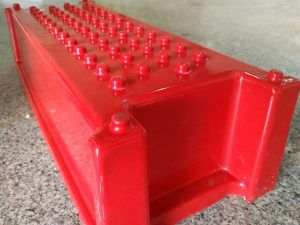The Vacuum Forming Process
The Vacuum Forming Process In its simplest form the process consists essentially of inserting a thermoplastic sheet in a cold state into the forming clamp area, heating it to the desired temperature either with just a surface heater or with twin heaters and then raising a mould from below. The trapped air is evacuated with the assistance of a vacuum system and once cooled a reverse air supply is activated to release the plastic part from the mould. The process is shown in diagram form on fig. 3.1 page 13. In its advanced stage pneumatic and hydraulic systems complimented with sophisticated heat and process controllers allow high speed and accurate vacuum forming Process for those heavy duty and high end volume applications

The thermoforming industry has developed despite two fundamental shortcomings. Many other thermoforming processes use a resin base in powder or pellet form. Vacuum forming Process begins further down the line with an extruded plastic sheet which incurs an additional process and therefore an extra cost to reach this stage. In addition, there is generally an area of material which is cut away from the formed part which unless reground and recycled has to be considered as waste and accounted for in any costings made. However these problems have been invariably resolved by strict control of sheet quality and by clever mould design to minimise the amount of waste material. Throughout this manual you will find useful hints and techniques to assist in maximising the potential from this process.
Despite the above disadvantages vacuum forming Process offers several processing advantages over such others as blow, rotational and injection moulding. Fairly low forming pressures are needed therefore enabling comparatively low cost tooling to be utilised and relatively large size mouldings to be economically fabricated which would be otherwise cost prohibitive with other processes. Since the moulds witness relatively low forces, moulds can be made of relatively inexpensive materials and mould fabrication time reasonably short. This results in comparatively short lead times. It provides the perfect solution for prototype and low quantity requirements of large parts as well as medium size runs utilising multiple moulds. The typical process steps can be identified as follows: clamping, heating with sheet level activated , pre-stretch, forming with plug assist, cooling with air and spray mist, release and trimming They are examined more closely under the following sub headings
.
فرآیند وکیوم فرمینگ ، وکیوم فرمینگ ، قطعات وکیومی ، قطعات وکیوم فرمینگ پلاستیک